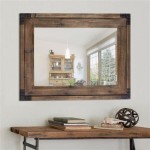Mirror Closet Door Roller Hardware Requirements
Mirror closet doors offer a sleek and space-saving solution for bedrooms and hallways. Their reflective surfaces create the illusion of a larger room while providing easy access to closet contents. However, the smooth operation and longevity of these doors hinge significantly on the quality and compatibility of the roller hardware used. Selecting appropriate roller hardware ensures the doors glide smoothly, remain stable, and withstand the rigors of daily use. This article details the critical hardware requirements for mirror closet doors, outlining the specifications necessary for optimal performance and durability.
Weight Capacity and Roller Material
The foremost consideration when selecting roller hardware is the weight capacity. Mirror closet doors are considerably heavier than standard wood or hollow-core doors due to the added weight of the glass mirror. Consequently, the roller hardware must be robust enough to support this increased weight without premature wear or failure. Manufacturers typically specify the maximum weight capacity for their roller hardware sets. This specification should be carefully reviewed and compared against the actual weight of the door. It's generally advisable to select hardware with a weight capacity that exceeds the door’s weight by a reasonable margin, providing a safety buffer and ensuring smooth operation over time.
The material from which the rollers are constructed also plays a crucial role in performance and durability. Common roller materials include nylon, steel, and polymers. Nylon rollers are often preferred for their quiet operation and resistance to wear. They typically offer a smoother, quieter glide compared to steel rollers. However, nylon rollers may not be suitable for extremely heavy doors, as they can deform or wear down more quickly under excessive loads. Steel rollers, on the other hand, offer superior strength and load-bearing capacity. They are ideal for heavier mirror closet doors where durability is paramount. The primary drawback of steel rollers is their potential for increased noise. Regular lubrication can mitigate this issue, but occasional maintenance is necessary. Polymer rollers offer a compromise between nylon and steel, providing a balance of durability and quiet operation. The specific type of polymer used can vary, influencing the roller’s performance characteristics. High-quality polymer rollers can be a good choice for mid-weight mirror closet doors.
The roller's bearing type also influences performance. Ball bearings offer smoother and more consistent rolling action compared to plain bearings. Ball bearings reduce friction and require less force to move the door, resulting in easier operation and reduced wear on the track and other hardware components. It is important to note that sealed ball bearings are preferable as they are less susceptible to dust and debris, ensuring continued smooth operation over time.
Track Compatibility and Adjustment
The compatibility between the rollers and the track is essential for proper door function. The track's dimensions and profile must align precisely with the roller's design. Incompatible track and roller combinations can result in uneven rolling, binding, or even complete failure of the door system. Most roller hardware sets are designed to work with specific track profiles, and manufacturers often provide detailed specifications to ensure compatibility.
Mirror closet doors often require precise alignment to ensure they close properly and maintain a consistent appearance. Therefore, the roller hardware should ideally offer some degree of adjustability. Adjustable rollers allow for fine-tuning the door's height and lateral position relative to the track. This adjustability compensates for minor irregularities in the floor or ceiling, ensuring that the doors hang straight and close evenly. Adjustment mechanisms can vary, but common designs include threaded stems or eccentric cams that allow for incremental adjustments with a screwdriver or wrench. The range of adjustability should be sufficient to accommodate typical variations in the installation environment. Furthermore, easy access to the adjustment mechanism is desirable, simplifying the alignment process. The accessibility of the adjustment mechanism often dictates how efficiently the doors can be aligned.
The material composition and structural integrity of the track are also critical. The track must be strong enough to support the weight of the doors and resist bending or warping over time. Aluminum or steel tracks are common choices, each offering different strengths and weaknesses. Steel tracks offer higher strength and durability but may be more susceptible to rust if not properly coated. Aluminum tracks are lightweight and corrosion-resistant but may be less rigid than steel tracks. The thickness of the track material is also an important factor, as thicker tracks are generally more resistant to bending and warping. The mounting method used to secure the track to the wall or ceiling is also significant. Secure mounting ensures that the track remains firmly in place, even under heavy loads. Appropriate fasteners, such as screws or bolts, should be used, and the mounting points should be spaced adequately to distribute the load evenly. Proper installation of the track is paramount for the long-term stability of the door system.
Door Thickness and Mounting Hardware
The thickness of the mirror closet door influences the selection of appropriate mounting hardware. The roller hardware must be compatible with the door's thickness to ensure a secure and flush fit. If the mounting hardware is too short, it may not adequately engage with the door, resulting in instability or failure. Conversely, if the mounting hardware is too long, it may protrude from the door, creating an unsightly appearance or posing a safety hazard. Manufacturers typically specify the recommended door thickness range for their roller hardware sets. This specification should be carefully reviewed and compared against the actual thickness of the door.
The quality of the mounting hardware, including screws, bolts, and brackets, is crucial for the overall stability and security of the mirror closet doors. Low-quality mounting hardware can strip, break, or corrode over time, compromising the integrity of the door system. High-quality mounting hardware, made from durable materials such as steel or stainless steel, is more resistant to wear and corrosion, ensuring long-lasting performance. The type of mounting hardware required will depend on the specific design of the roller hardware and the construction of the door. Some roller hardware sets may require specialized brackets or plates to distribute the load evenly and prevent damage to the door. It’s imperative to use the correct type and size of mounting hardware as specified by the manufacturer, as substituting inferior hardware can lead to problems.
Beyond structural elements, the aesthetic aspects of the hardware also deserve consideration. While functionality is primary, the visual appearance of the rollers and track can contribute to the overall aesthetic of the room. Hardware is available in a variety of finishes, including chrome, brushed nickel, and powder-coated colors. Selecting a finish that complements the door's frame and other hardware in the room can enhance the overall design. Concealed hardware, where the rollers and track are hidden from view, can create a cleaner, more minimalist look. However, concealed hardware may be more complex to install and maintain. Visible hardware, on the other hand, is often easier to install and access for maintenance. The choice between concealed and visible hardware depends on personal preference and the desired aesthetic of the room.

Sliding Mirror Closet Door Rollers Hardware Fits Contractors Part W

Dsh 20241 Mirrored Bypass Door Track Swisco Com

Sliding Mirror Closet Door Rollers Hardware Fits Contractors Part W

Prime Line Mirror Door Roller Assembly 1 2 In Steel Housing And Ball Bearings Concave Plastic Wheel N 6861 The Home Depot

Prime Line Mirror Door Roller Unique Housing 1 2 In Nylon Grooved N 6576 The Home Depot

Closet Door 1 4 Nylon Ball Bearing Sliding Mirror Doo

Mirror Closet Door Roller 1 2 Nylon Concave Wheel Discontinued

Replacing The Stanley Sliding Door Top Roller Kit 00 5024 Swisco Com

Sliding Mirror Closet Door Rollers Hardware Fits Contractors Part W

Barton Kramer Sliding Closet Mirror Door Roller Assembly 542 The Home Depot








